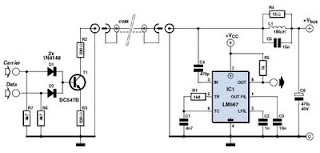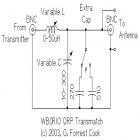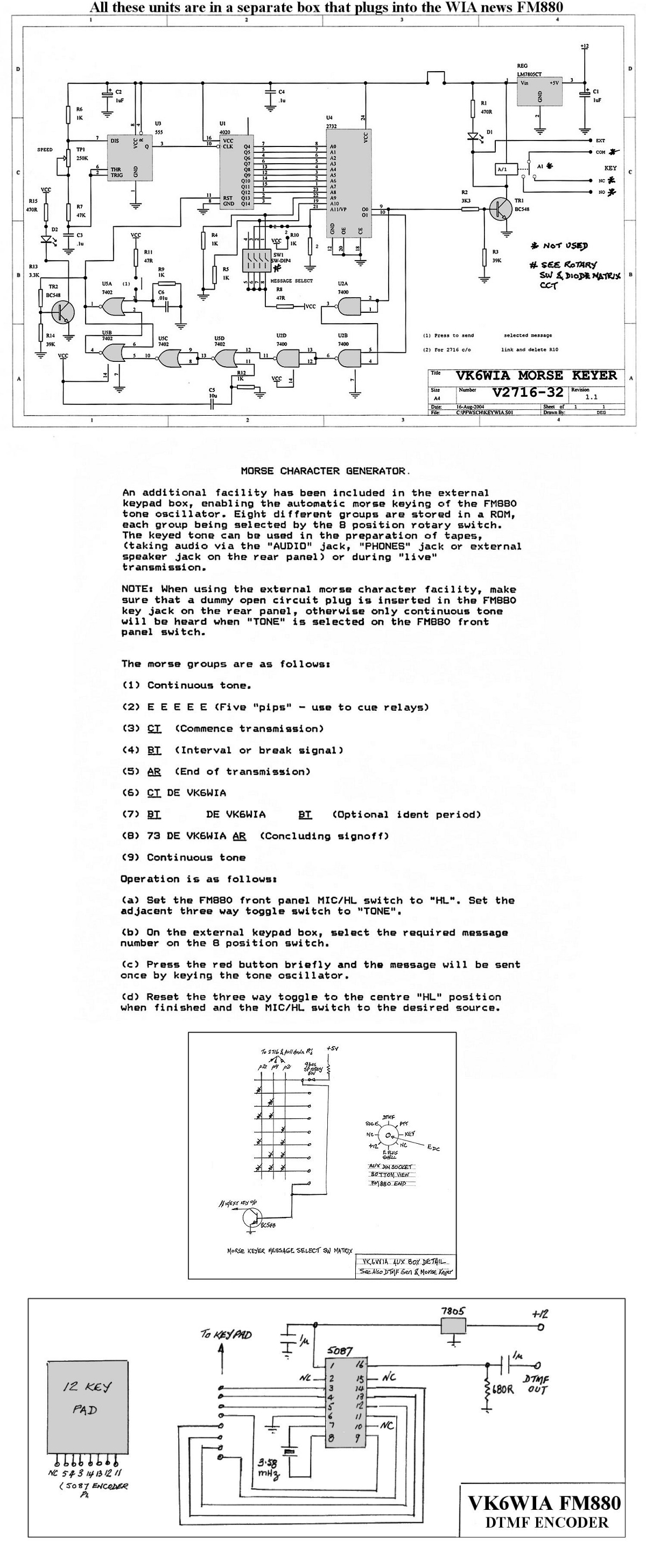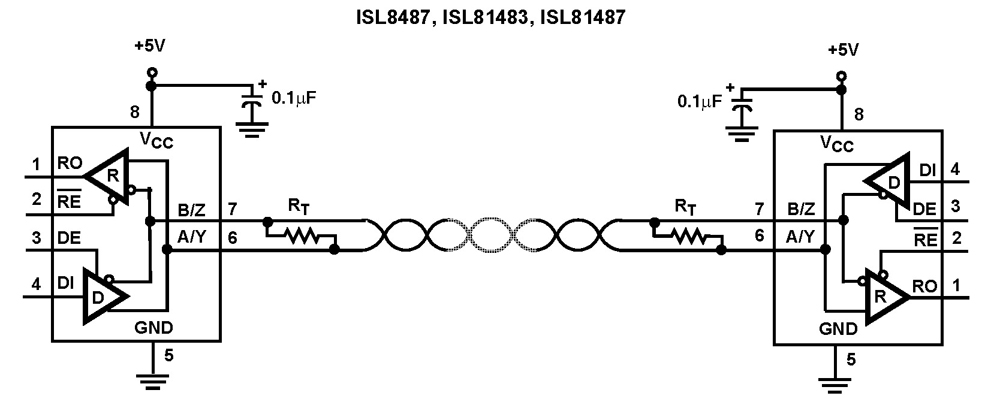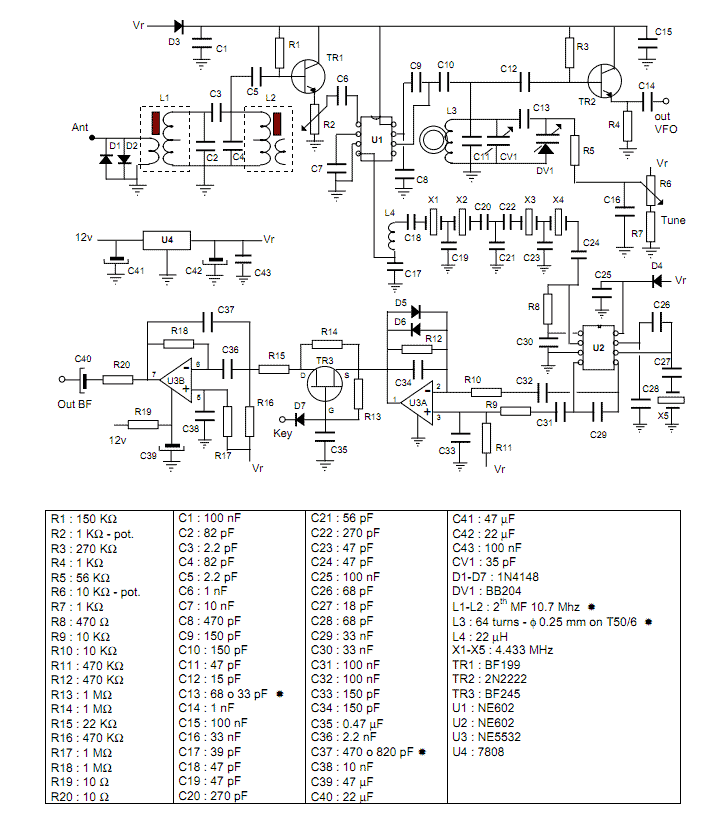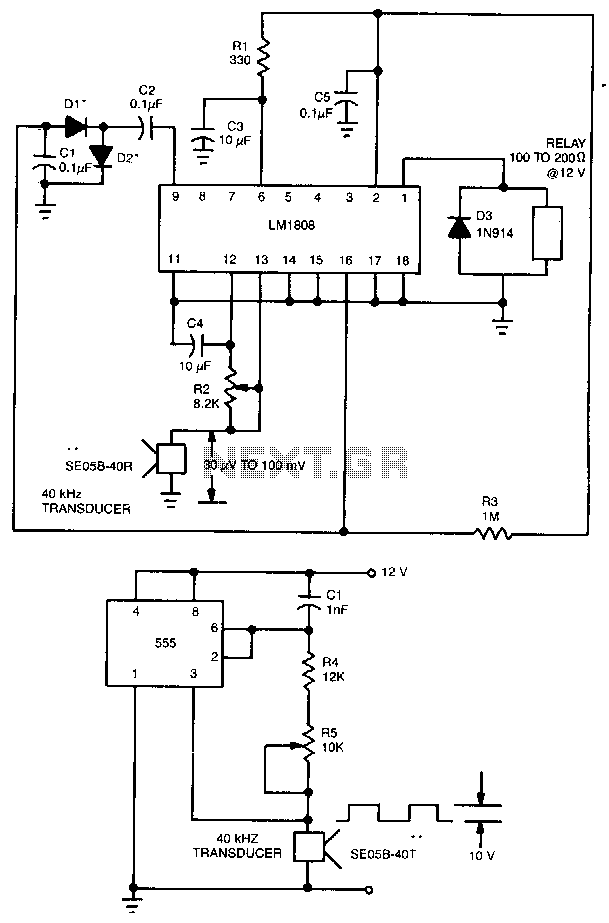
QRP CW TRANSCEIVER
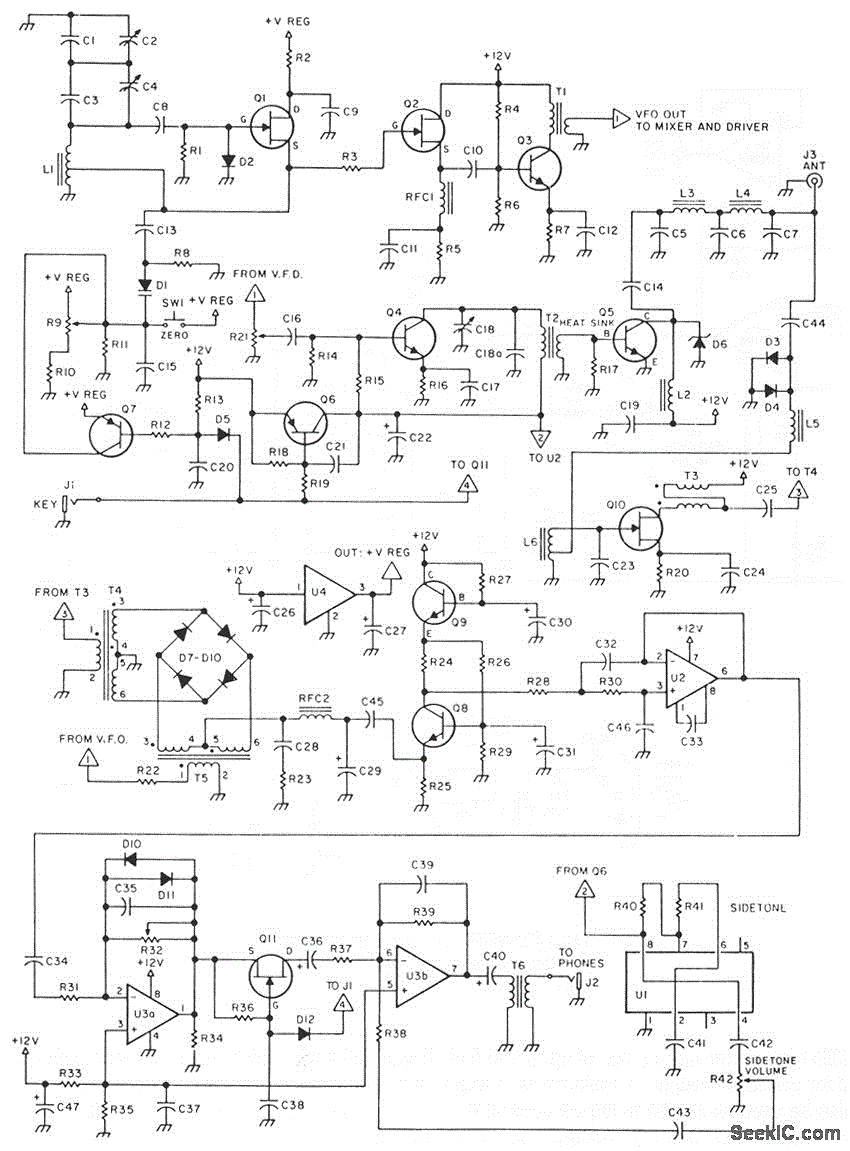
This is a 3-W, single-circuit board, VFO-controlled CW transceiver for 40 or 30 meters, featuring a direct-conversion receiver with audio filtering, Receiver Incremental Tuning (RIT), and speaker level audio volume. The transmit frequency is generated by Q1 and its associated components in the VFO. The buffer, Q2, isolates the oscillator from the other circuit.
The described circuit is a compact and efficient VFO-controlled continuous wave (CW) transceiver designed for amateur radio operation on the 40 and 30-meter bands. With a power output of 3 Watts, this single-circuit board design emphasizes simplicity and performance, making it suitable for both beginners and experienced operators.
The core of the transceiver is the Voltage-Controlled Oscillator (VFO), which generates the transmit frequency. The oscillator is implemented using transistor Q1, which is configured with associated passive components to provide stable frequency generation. The design allows for precise tuning across the desired frequency range, ensuring reliable communication.
The direct-conversion receiver architecture enables the transceiver to demodulate incoming signals effectively. This method simplifies the design by allowing the use of a single mixer stage, where the received RF signals are mixed directly with the VFO output. The resulting baseband audio signal is then processed through audio filtering stages, which enhance the quality of the received audio and reduce unwanted noise.
Receiver Incremental Tuning (RIT) is incorporated into the design, allowing operators to fine-tune the received signal frequency without altering the main tuning setting. This feature is particularly useful in crowded band conditions where precise frequency adjustments are required to maintain clear communication with other stations.
The output audio is managed through a speaker-level volume control, which allows the operator to adjust the audio output to a comfortable listening level. This feature enhances usability, especially during extended operating sessions.
Transistor Q2 serves as a buffer, isolating the VFO oscillator from the rest of the circuit. This isolation is crucial in preventing loading effects that could destabilize the oscillator's frequency output, ensuring consistent performance and reliability.
Overall, this VFO-controlled CW transceiver represents an excellent choice for amateur radio enthusiasts looking for a straightforward yet effective solution for operating on the 40 and 30-meter bands. Its design prioritizes functionality while maintaining a compact footprint, making it an ideal project for those interested in building their own transceiver.This is a 3-W, single-circuit board, VFO-controlled CW transceiver for 40 or 30 me`ers, featuring a direct-conversion receiver with audio filtering, Receiver Incremental Tuning (RIT). and speaker level audio volume. The transmit frequency is generated by Q1 and its associated component in the VFO The buffer, Q2, isolates the oscillator from the other circuit..
🔗 External reference
The described circuit is a compact and efficient VFO-controlled continuous wave (CW) transceiver designed for amateur radio operation on the 40 and 30-meter bands. With a power output of 3 Watts, this single-circuit board design emphasizes simplicity and performance, making it suitable for both beginners and experienced operators.
The core of the transceiver is the Voltage-Controlled Oscillator (VFO), which generates the transmit frequency. The oscillator is implemented using transistor Q1, which is configured with associated passive components to provide stable frequency generation. The design allows for precise tuning across the desired frequency range, ensuring reliable communication.
The direct-conversion receiver architecture enables the transceiver to demodulate incoming signals effectively. This method simplifies the design by allowing the use of a single mixer stage, where the received RF signals are mixed directly with the VFO output. The resulting baseband audio signal is then processed through audio filtering stages, which enhance the quality of the received audio and reduce unwanted noise.
Receiver Incremental Tuning (RIT) is incorporated into the design, allowing operators to fine-tune the received signal frequency without altering the main tuning setting. This feature is particularly useful in crowded band conditions where precise frequency adjustments are required to maintain clear communication with other stations.
The output audio is managed through a speaker-level volume control, which allows the operator to adjust the audio output to a comfortable listening level. This feature enhances usability, especially during extended operating sessions.
Transistor Q2 serves as a buffer, isolating the VFO oscillator from the rest of the circuit. This isolation is crucial in preventing loading effects that could destabilize the oscillator's frequency output, ensuring consistent performance and reliability.
Overall, this VFO-controlled CW transceiver represents an excellent choice for amateur radio enthusiasts looking for a straightforward yet effective solution for operating on the 40 and 30-meter bands. Its design prioritizes functionality while maintaining a compact footprint, making it an ideal project for those interested in building their own transceiver.This is a 3-W, single-circuit board, VFO-controlled CW transceiver for 40 or 30 me`ers, featuring a direct-conversion receiver with audio filtering, Receiver Incremental Tuning (RIT). and speaker level audio volume. The transmit frequency is generated by Q1 and its associated component in the VFO The buffer, Q2, isolates the oscillator from the other circuit..
🔗 External reference
